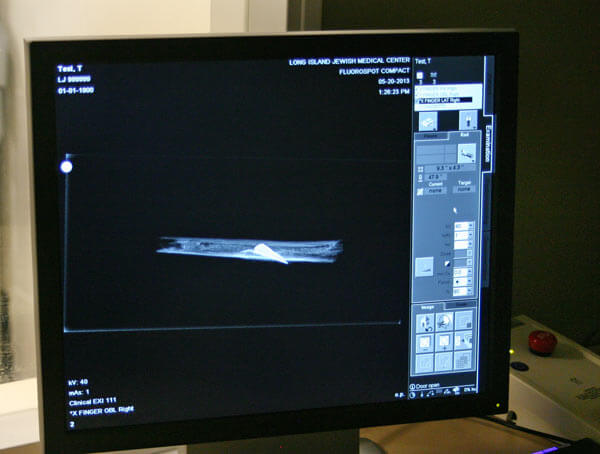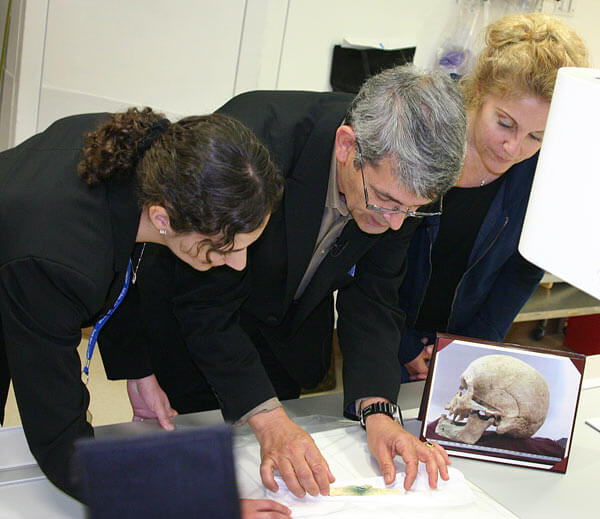By Steve Mosco
Memorial Day commemorates the men and women who served their country — no matter the century.
One week before the country sets aside time to honor service people, a North Shore-Long Island Jewish doctor, along with a noted professor of anthropology from Adelphi University, examined the remains of a wounded Greek warrior from the fourth century B.C. in an effort to understand ancient surgical practices on the field of battle.
The remains of the soldier were discovered during an archaeological excavation carried out by the Greek Archaeological Service in the 1980s. Professor Anagnostis Agelarakis brought the remains to the United States on official loan from Greece and with the help of Dr. Helise Coopersmith, a musculoskeletal radiologist at LIJ in New Hyde Park, L.I., examined the warrior’s skull fragments and his left ulna bone.
Agelarakis said the 2,500-year-old bone fragment from the forearm of the Greek warrior had a bronze arrowhead embedded in it. The professor said the X-ray revealed the arrowhead was fixed with a bronze hook at the tip, making it impossible for field surgeons to make a complete extraction.
“It is quite amazing to think that this soldier not only endured this procedure without anesthesia, but he also lived many more years,” said Agelarakis. “This disabled vet survived to around 60 years old with this painful injury.”
The professor said a wound of this kind is an extremely rare find in the world of anthropology.
“This is more rare than finding a diamond,” he said. “Many hundreds of Greek warriors have been excavated and this is the first time a wound like this has been observed.”
North Shore’s Coopersmith said the warrior probably suffered for the rest of his life with constant pain, akin to severe carpal tunnel syndrome, as well as post-traumatic syndrome effects. Coopersmith also said the bone shows no sign of immediate infection, but the warrior would have lost certain abilities to turn his arm and grip with his hand.
While the remains were on loan to Adelphi, professors were also able to examine skull fragments and reconstruct the warrior’s face, illustrating what he could have looked like at the time of his death.
Argie Agelarakis, a professor of technical drawing and archeological science illustration, carried out the facial reconstruction with the help of her students.
While the soldier’s face is unique, his life was not. Agelarakis said every male in ancient Greece was required to serve his country in the military. The professor, who himself served in the Greek military, said this warrior’s wounds show the price paid by service people around the world.
“It shows the deep sacrifice of people in the military,” he said. “The ones who do survive are often left with terrible injuries. Of course, some do not survive at all.”
Reach reporter Steve Mosco by e-mail at smosco@cnglocal.com or by phone at 718-260-4546.



































